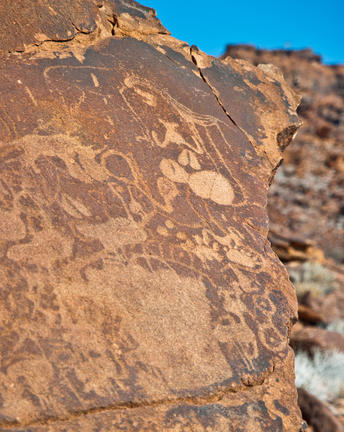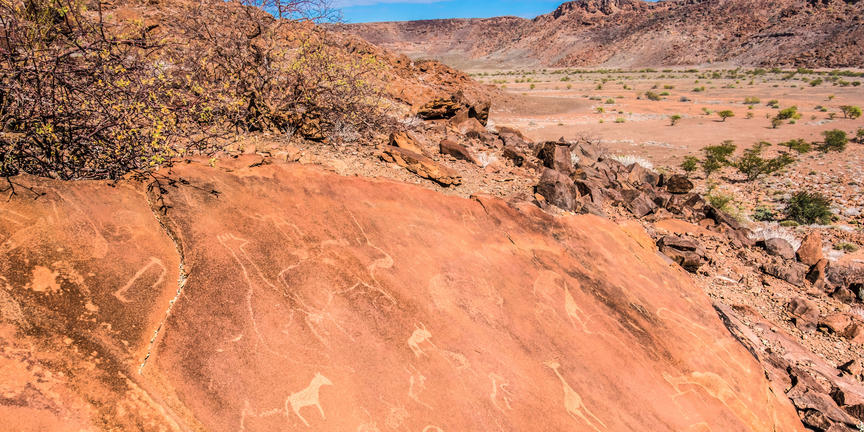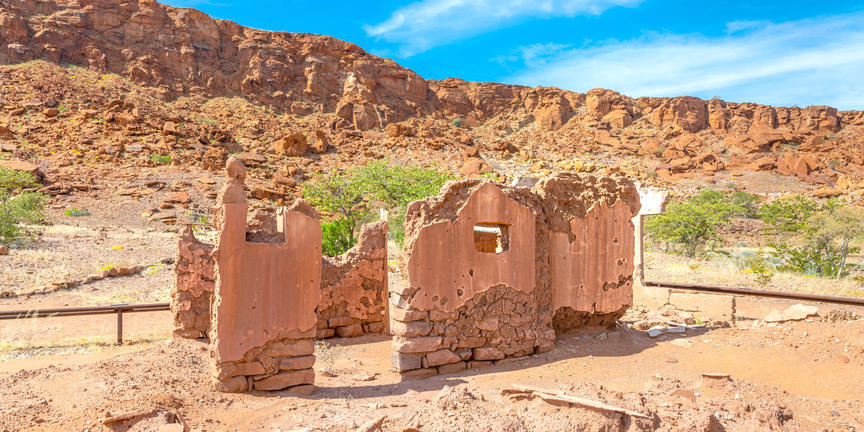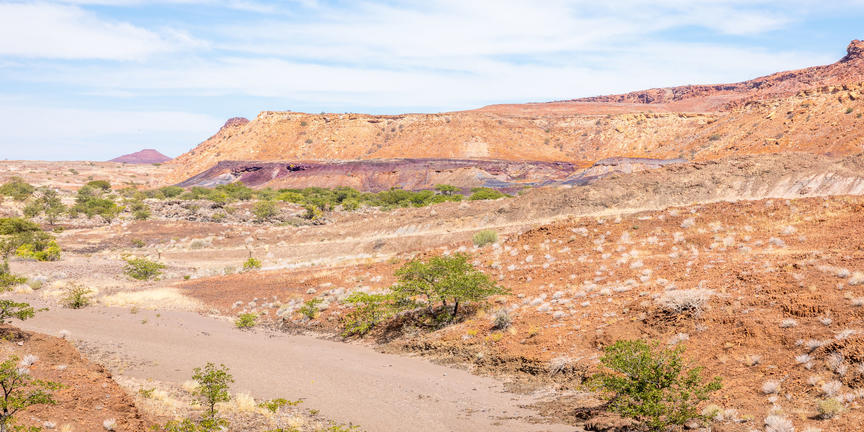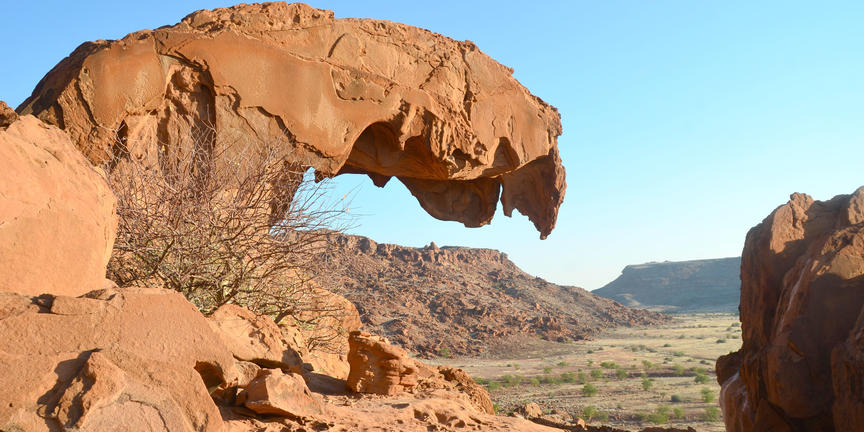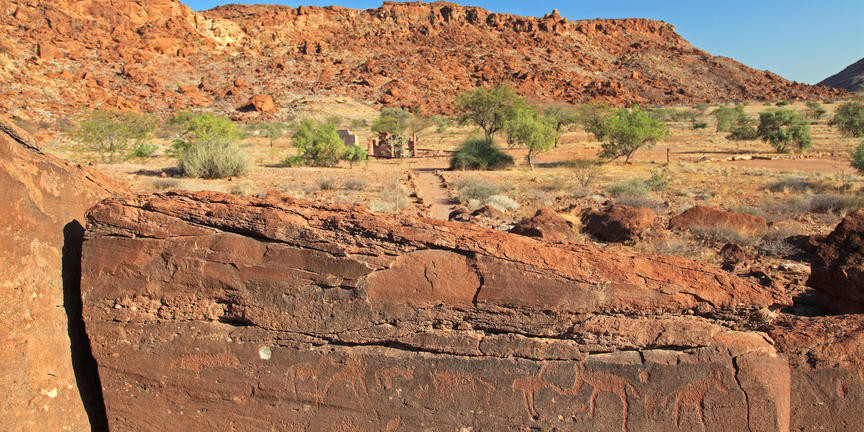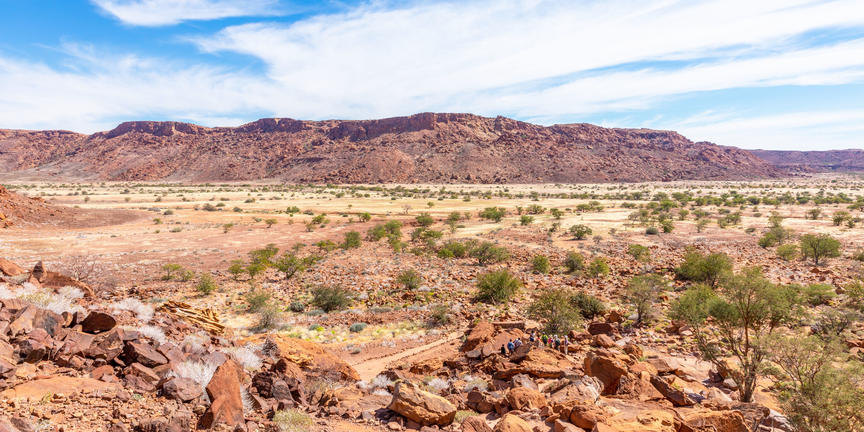Twyfelfontein, in the Kunene Region of north-western Namibia, is one of the largest concentrations of rock art in Africa and Namibia's first World Heritage Site.
Thousands of tourists come to this site each year to view some 2, 500 Stone Age rock engravings. The area is home to 17 rock art sites, which collectively encompass 212 engraved stone slabs. There are an additional 13 sites displaying rock paintings. It consists of hundreds of sandstone slabs covered with rock engravings of animals, and there are a few paintings, too.
The enormous ‘open-air art gallery’ is found in the Huab Valley, flanked by flat-topped sandstone mountains. Twyfelfontein (spring of doubt) is the name that a despairing farmer gave to a perennial spring at the site in the late 1940s. The spring attracted Stone Age hunters over six thousand years ago. The petroglyphs had ritual significance and also served as maps, as well as for educational purposes and recording events.


